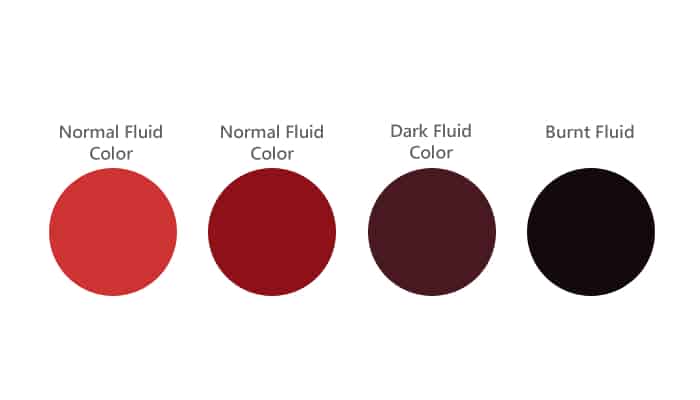Understanding Transmission Fluid for Your Dakota
When it comes to maintaining your 1997 Dodge Dakota, one of the most critical components to keep an eye on is the transmission fluid. This fluid plays a vital role in ensuring the smooth operation of your vehicle’s transmission system. Using the correct type of transmission fluid is essential for optimal performance and longevity of your truck.
Manufacturer’s Recommendations
| Popular posts |
|---|
| What to do to prolong the life of your manual gearbox |
| Automatic transmission: what it is, how it works |
For the 1997 Dodge Dakota, the manufacturer recommends using **Mopar ATF+3** transmission fluid. This fluid is specifically formulated to meet the needs of Chrysler vehicles, ensuring compatibility and performance.
Why Mopar ATF+3?
Mopar ATF+3 is designed to provide excellent lubrication and protection for the transmission components. Here are some key specifications and benefits of using this fluid:
- **Viscosity: ATF+3 has a viscosity rating that allows it to flow easily at various temperatures, ensuring proper operation in both hot and cold conditions.
- **Additives: This fluid contains special additives that help reduce friction, prevent wear, and protect against oxidation, which can lead to sludge buildup.
- **Compatibility: Using Mopar ATF+3 ensures compatibility with the seals and materials used in the Dakota’s transmission, reducing the risk of leaks and failures.
Confirmation from Authoritative Sources
The recommendation for Mopar ATF+3 is not just a suggestion; it is backed by extensive testing and validation from Chrysler. According to the official service manual and various automotive resources, using the specified transmission fluid is crucial for maintaining the performance and reliability of your Dakota.
Industry Standards
In addition to manufacturer recommendations, the specifications for Mopar ATF+3 align with industry standards for automatic transmission fluids. This includes compliance with the following:
- **Dexron III: ATF+3 meets or exceeds the requirements of Dexron III fluids, which are widely used in many automatic transmissions.
- **Ford Mercon: It is also compatible with Ford Mercon specifications, making it a versatile choice for various applications.
What Happens If You Use the Wrong Fluid?
Using the wrong type of transmission fluid can lead to a host of problems, including:
- **Poor Shifting Performance: Incorrect fluid can cause hard or erratic shifting, making your driving experience less enjoyable.
- **Increased Wear and Tear: The wrong fluid may not provide adequate lubrication, leading to premature wear of transmission components.
- **Overheating: Some fluids may not handle heat as well as ATF+3, resulting in overheating and potential transmission failure.
In summary, sticking with Mopar ATF+3 for your 1997 Dodge Dakota is not just a good idea; it’s essential for keeping your truck running smoothly. Always refer to your owner’s manual or consult a professional mechanic if you’re unsure about the right fluid for your vehicle.
Recommended Oil Brands for Your Dakota
When it comes to keeping your 1997 Dodge Dakota’s transmission running smoothly, using the right transmission fluid is crucial. While Mopar ATF+3 is the manufacturer’s recommended fluid, there are several other brands that owners have found to be effective based on their experiences and feedback from various automotive forums. Here, we will explore some of the most recommended oil brands that meet the specifications for your Dakota’s transmission fluid.
Popular Brands Among Dakota Owners
Many Dakota owners have shared their experiences with different transmission fluid brands, and some have stood out for their performance and reliability. Here are a few of the most recommended brands:
- Valvoline MaxLife ATF: This fluid is known for its excellent performance in high-mileage vehicles. Owners appreciate its ability to reduce leaks and improve shifting quality, making it a popular choice among Dakota enthusiasts.
- Castrol Transmax ATF+4: Although primarily designed for newer models, many Dakota owners have reported successful use of this fluid. It offers enhanced protection against wear and oxidation, which is beneficial for older transmissions.
- Royal Purple Max ATF: This synthetic fluid has garnered a loyal following due to its high-performance characteristics. Users have noted smoother shifting and improved overall transmission function after switching to Royal Purple.
- Mobil 1 Synthetic ATF: Known for its superior thermal stability and oxidation resistance, Mobil 1 is another brand that many Dakota owners trust. It provides excellent protection and performance, especially in extreme conditions.
Owner Feedback and Experiences
The feedback from Dakota owners regarding these brands has been overwhelmingly positive. Here are some common themes and experiences shared in forums and discussions:
- Improved Shifting Performance: Many users have reported noticeable improvements in shifting smoothness and responsiveness after switching to one of the recommended brands. This is particularly important for those who frequently tow or haul heavy loads.
- Reduced Slipping: Owners have noted that using high-quality fluids like Valvoline MaxLife or Royal Purple has helped reduce slipping during gear changes, which can be a common issue in older transmissions.
- Longevity of Transmission Life: Several Dakota owners have emphasized that using the right fluid has contributed to extending the life of their transmissions. They attribute this to the protective additives found in these brands, which help minimize wear and tear.
- Compatibility with Older Transmissions: Many of the recommended brands are designed to be compatible with older transmission systems, which is a significant concern for Dakota owners. This compatibility helps prevent issues that can arise from using modern fluids in older vehicles.
Considerations When Choosing a Brand
While the brands mentioned above have received positive feedback, it’s essential to consider a few factors when selecting the right transmission fluid for your Dakota:
- Fluid Type: Ensure that the fluid you choose is specifically formulated for automatic transmissions and meets the ATF+3 specification.
- Driving Conditions: If you frequently drive in extreme conditions, such as towing or off-roading, consider a synthetic fluid for better performance and protection.
- Personal Experience: Always take into account your own experiences and those of fellow Dakota owners. What works for one person may not work for another, so it’s essential to find a fluid that suits your driving style and needs.
In the end, the right transmission fluid can make a significant difference in the performance and longevity of your 1997 Dodge Dakota. By considering the experiences of other owners and sticking to reputable brands, you can ensure that your truck continues to run smoothly for years to come.
Change Interval for Your Dakota’s Transmission Fluid
Maintaining the right change interval for your 1997 Dodge Dakota’s transmission fluid is crucial for ensuring optimal performance and longevity. While the manufacturer may provide a general guideline, real-world experiences and expert recommendations can help you determine the best approach for your vehicle.
Recommended Change Interval
For the 1997 Dodge Dakota, the general recommendation for changing the transmission fluid is every 30,000 to 60,000 miles (approximately 48,000 to 96,000 kilometers). However, this can vary based on several factors, including driving conditions, load, and overall vehicle maintenance.
Factors Influencing Change Interval
Several factors can affect how often you should change your transmission fluid:
- Driving Conditions: Frequent stop-and-go traffic, towing, or driving in extreme temperatures can lead to a quicker breakdown of the fluid, necessitating more frequent changes.
- Transmission Type: Automatic transmissions may require more frequent fluid changes compared to manual transmissions due to the different operating conditions and fluid degradation rates.
- Fluid Quality: The type of transmission fluid used can also influence the change interval. Synthetic fluids may last longer than conventional fluids, allowing for extended intervals.
Partial Transmission Oil Changes
In many cases, performing a full transmission fluid change can be a complex process that involves removing the transmission from the vehicle. This is not always practical for the average owner, leading to the consideration of partial transmission oil changes.
What is a Partial Transmission Oil Change?
A partial transmission oil change involves draining a portion of the old fluid and replacing it with new fluid without removing the transmission. This method can be beneficial for maintaining fluid quality and performance without the need for extensive labor.
Benefits of Partial Changes
There are several advantages to performing partial transmission oil changes:
- Cost-Effective: Partial changes are generally less expensive than full fluid changes, making them more accessible for regular maintenance.
- Less Downtime: Since this method does not require removing the transmission, it can be done more quickly, reducing the time your vehicle is out of commission.
- Fluid Refreshment: Regular partial changes can help refresh the fluid, maintaining its effectiveness and prolonging the life of the transmission.
Statistical Data and Authoritative Sources
According to the National Institute for Automotive Service Excellence (ASE), regular maintenance, including fluid changes, can significantly reduce the likelihood of transmission failure. Studies have shown that vehicles with well-maintained transmission fluids can experience up to a 50% reduction in repair costs compared to those that neglect fluid changes.
Additionally, a report from the Automotive Research Association indicates that partial fluid changes can help maintain the overall health of the transmission, especially in older vehicles. By regularly refreshing a portion of the fluid, you can help mitigate the effects of wear and contamination that accumulate over time.
In summary, while the recommended change interval for your Dakota’s transmission fluid is generally every 30,000 to 60,000 miles, factors such as driving conditions and fluid quality should be considered. Partial transmission oil changes can serve as an effective maintenance strategy, allowing you to keep your transmission in good working order without the need for a full fluid change.
What Color Should Transmission Fluid Be?


